17 Reasons To Go Leather Free
Have you ever wondered about the cow who died so people could wear leather shoes, jackets, and bags?
1 Cows feel, and want to live
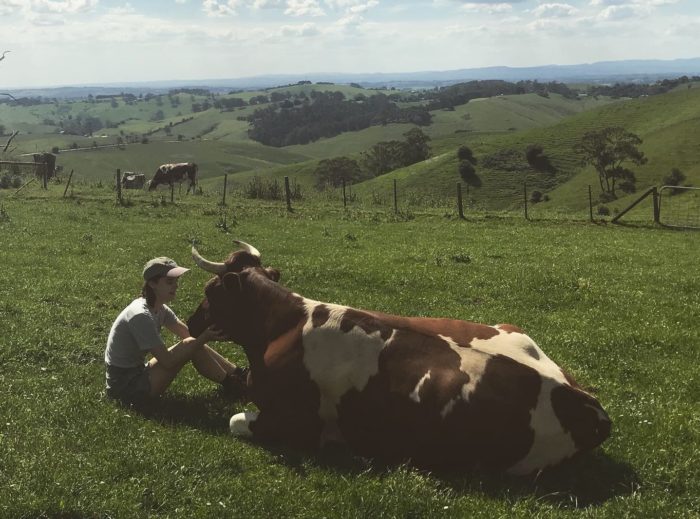
Leather is most often the skin of a cow. Cows are feeling, thinking beings. Cows have complex social lives just like humans. They see some cows as close friends and others as just acquaintances, just like we do. They play together, are curious and even become excited when they learn something new.
Cows want to live just like we do, and when we wear their skin, it is because their life has been stolen from them. It is never humane to kill someone who does not want to die.
Sources:
Animal Behaviour and Cognition
The Secret Life Of Cows
2 Your leather bag could be made of a baby
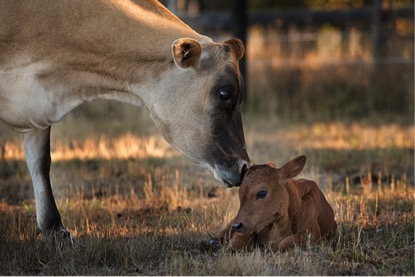
Much of the highest quality leather comes from babies. Because calves are younger, their skin is softer, just like a human baby’s skin is. Bobby calves seen as wastage in the dairy industry are skinned for their ‘valuable hides’.
RSPCA Australia states that ‘vealer’ calves usually grow up on specialist calf-rearing properties and are generally reared in groups in sheds, their skins are worth good money.
Sources:
Business Of Fashion
RSPCA 1
RSPCA 2
The Weekly Times
3 Slaughtered mothers and their unborn babies
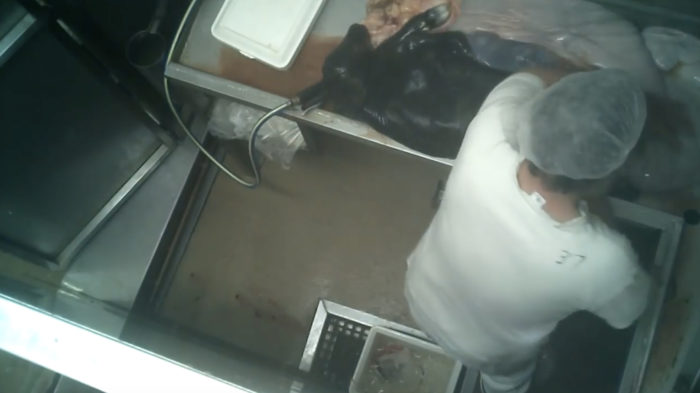
Some leather is called slink or slunk leather, and it is known as the very softest, most supple leather available. This leather is made from the skin of an unborn baby cow.
These babies come from mother cows who are sent to a slaughterhouse while pregnant, sometimes days off birthing. The Department of Primary Industries NSW states that ‘quite a high proportion of cull cows are pregnant’. Once the mother has been killed, the baby is cut out of their mother – sometimes while the baby is still alive.
Sources:
Chichester Inc
Animals Australia
Meat and Livestock Australia
Department of Primary Industries, NSW
4 Leather is not just a ‘by-product’ of the meat industry
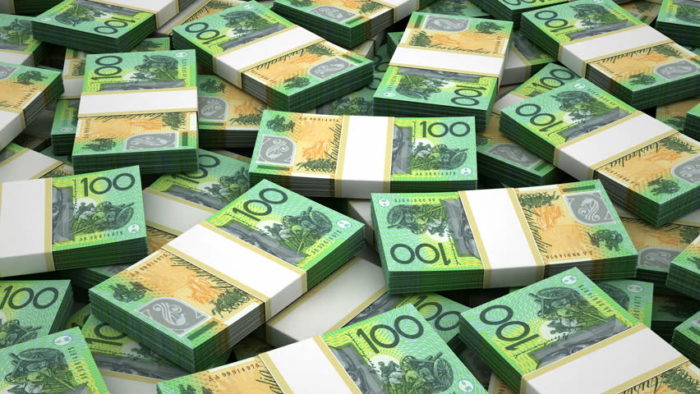
Often people try to justify buying leather by saying it should be used so as to reduce waste in the meat industry. This is wrong because leather is not a freely given product of the meat industry. Meat and Livestock Australia describe hides as ‘co-products’ of the meat industry, as profits come from their sale.
The global leather goods market is valued at $95.4 billion USD, and is set to reach $128.61 billion USD by 2022. Leather products are not sold to reduce waste, they are sold for profit.
Slaughterhouses and the wider cattle industry alike have reported multi-million dollar losses due to the decline in leather profits due to more caring people choosing vegan alternatives.
Buying leather pays for the slaughter of animals.
Sources:
Business Wire
Stock Journal
Meat and Livestock Australia
ABC
5 Cows should not be killed for our vanity
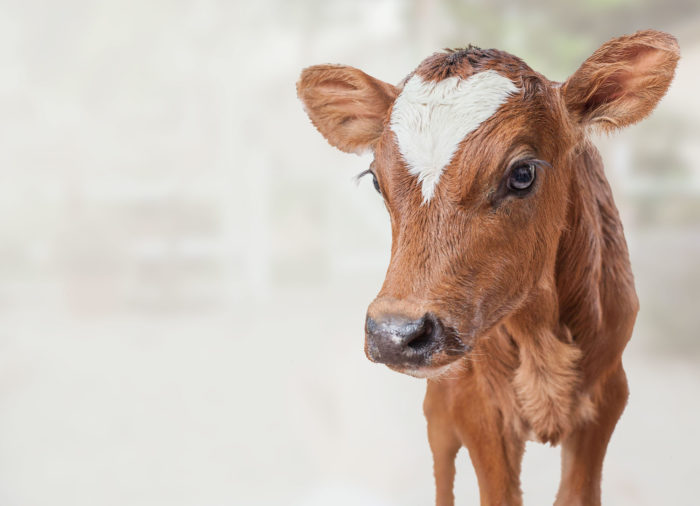
While some leather is made from the skins of cows also exploited and killed for beef and dairy, some cows are raised specifically for their skin, to meet demand.
Luxury brands also want skins from animals that have no ‘marks’ – cuts, barbed wire scars, tick or bug bites.
Don Oshman, publisher of Hidenet said ‘Many European luxury bag makers use calf skins, and people aren’t eating much veal these days. ‘For this reason, more calves are being raised specifically for their skin: ‘A calf is raised in a pen and never goes outside, so it’s skin is blemish-free’.
Sources:
Business Of Fashion
6 Standard farming practices are painful
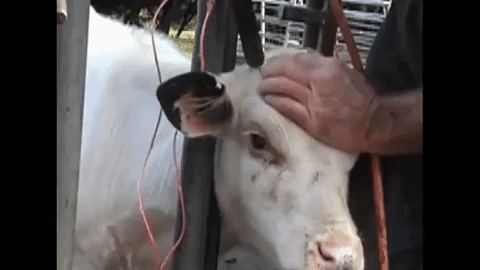
The cutting out of testicles, the crushing of the spermatic cord, the burning of horn buds in the head, the cutting out of horn buds, are all practices which can legally be done without any pain relief on cows below six months old in Victoria, Australia. The supposedly ‘high animal welfare standards’ in Australia do not protect animals.
The above calf is having budding horns removed with a hot iron cautery.
Sources:
Peta
Agriculture Victoria
Future Beef 1
Future Beef 2
RSPCA Knowledgebase
7 Cows are sexually exploited
Artificial insemination (AI) means forcing a fist into the anus of a cow and inserting a rod with semen into her vagina. Most dairy cows are forcibly impregnated in this way.
AI is done so as to breed cows with the semen of bulls with ‘superior genetics’ who may be in different locations or who have already been slaughtered. It also allows the insemination of more cows with the semen of one ‘superior’ bull than would naturally be possible.
Bulls who have their semen taken from them by ‘electro-ejaculation’. This exploitative method involves forcing a probe into the rectum of a bull which stimulates him until he ejaculates.
Sources:
Agriculture: Government of Australia
Agriculture Western Australia
Department of Primary Industries NSW
8 There is no such thing as ‘ethically sourced leather’
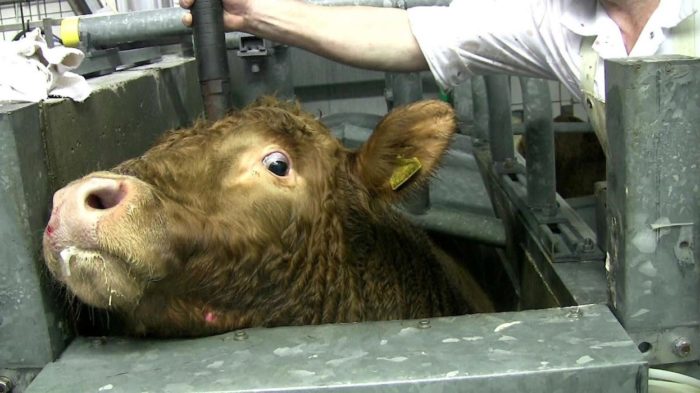
There is no humane way to kill someone who doesn’t want to die.
All cows, no matter how they were raised, or what farming ‘practices’ they suffered, have their lives taken from them.
9 Cruelty to cows, even in places they are supposed to be protected
Even in India, where cows are considered sacred by Hindi’s, and their slaughter is illegal to different extents in all but a few states, there is abhorrent cruelty to cattle.
Cows are forced on long journeys, often on foot, across the country to these states were slaughter is legal. Cows who become exhausted and struggle to continue are forced to. Ropes which are pierced through their noses are tugged on, their tails are twisted and broken, they are beaten with sticks, and have peppers forced into their eyes.
Once at a slaughterhouse, cows are killed in front of each other, their throats slit while fully conscious, some even skinned alive.
India is the largest hide producer worldwide so it’s likely if you’re wearing leather, it’s the skin of a cow who was killed in India.
Sources:
The Independent
Leather Council
Dominion Movement
New York Times
The Hindu
10 You don’t know where your leather came from
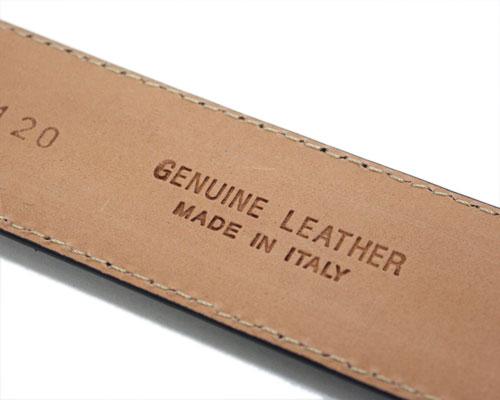
There aren’t laws requiring the accurate labelling of leather – who or where it came from. For example, Italy is Europe’s biggest producer of finished leather but less than 10% of the raw or semi-finished hides used in the industry come from Italian farms.
Italy is tied as only the 11th largest hide producer in the world, producing 3.6 million ‘pieces’ of skin a year. Most cow hides come from India, China and Brazil, countries all producing over 40 million pieces annually.
There is no way of knowing where leather is really sourced from, and so no way of knowing how that cow was treated or killed. Even if you did know though, cows do not wants to die, no matter how.
Sources:
Food and Agriculture Organisation of the United Nations
Reuters
Italy UK Law
11 Vulnerable people suffer for leather
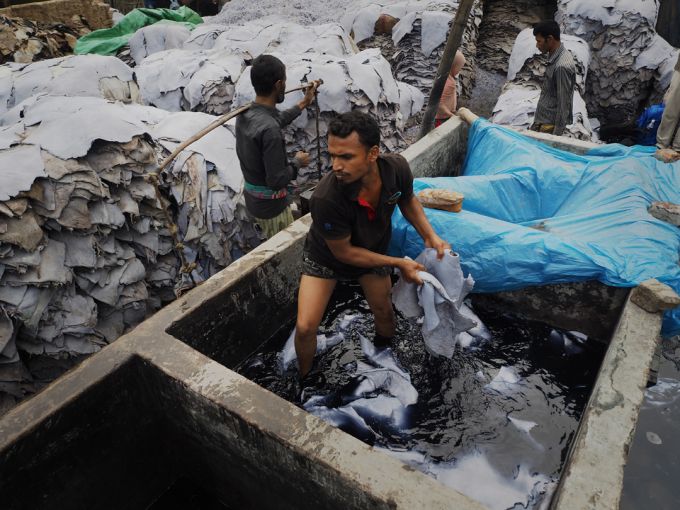
The vast majority of leather is tanned with the use of extremely hazardous chemicals such as Formaldehyde, Chromium and Arsenic. These chemicals have all been found to be human carcinogens. These chemicals combined have been linked to increased risks of lung, nasal, and sinus cancer, leukaemia, severe dermatitis, liver abnormalities, skin lesions, cardiovascular diseases and increased deaths in young adults.
When tanning leather, workers are exposed to these chemicals and their health suffers. Due to heavy water pollution, communities surrounding tanneries are put at risk, too.
In Bangladesh for example, where the tanning of leather is of great economic value, 90% of tannery workers die before the age of 50.
Sources:
Pulitzer Centre
US National Library of Medicine
The Guardian
World Health Organisation
Agency for Toxic Substances and Diseases Registry
South Australia Health
American Cancer Society
PBS
12 You don’t know who your leather came from
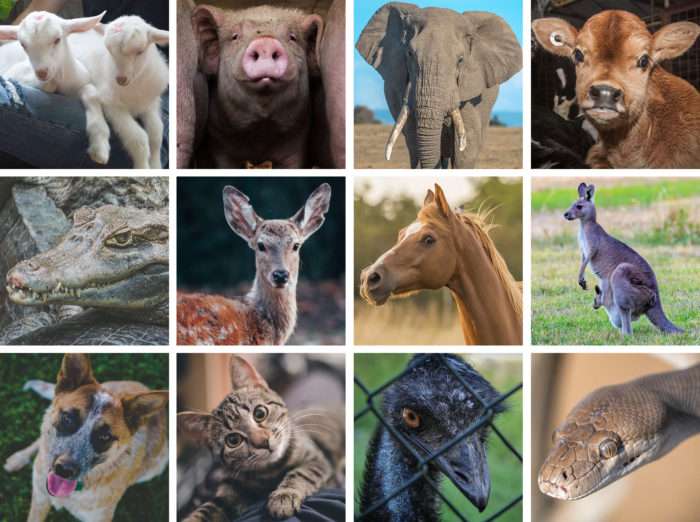
Just as there are not labelling laws requiring the slaughter location, there is also no way to know what animal leather came from.
While the large majority of leather comes from cows, it also can come from slaughtered pigs, sheep, kangaroos, goats, deers, horses, countless other animals, even including cats and dogs.
Leather from cats and dogs often comes from China, where a meat trade for these animals exists. There are also very little animal cruelty laws in China, the largest exporter of leather worldwide.
Sources:
Peta
Animals Australia
13 Leather is terrible for the environment
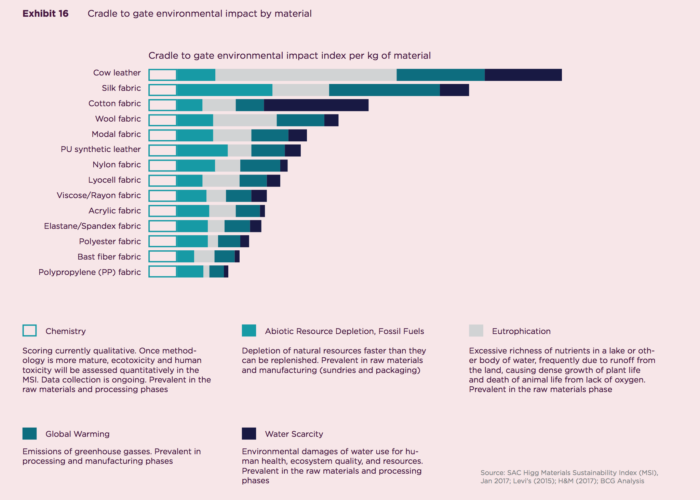
The Global Fashion Agenda found that cow skin leather is the single most environmentally impactful material of all to produce.
According to CSIRO and the University of Sydney, 92% of all land degradation in Australia is caused by animal industries. 56% of this damage is caused specifically by the rearing of cattle.
Cattle ranching is the largest driver of deforestation in every Amazon country, accounting for 80% of current deforestation rates. Brazil is the third largest exporter of leather in the world, so it is clear that the leather industry is causing enormous damage to the lungs of our planet.
Source:
Global Fashion Agenda
CSIRO
Veg Vic
Yale School of Forestry and Environmental Studies
Leather Council
14 Even common synthetic leathers are better
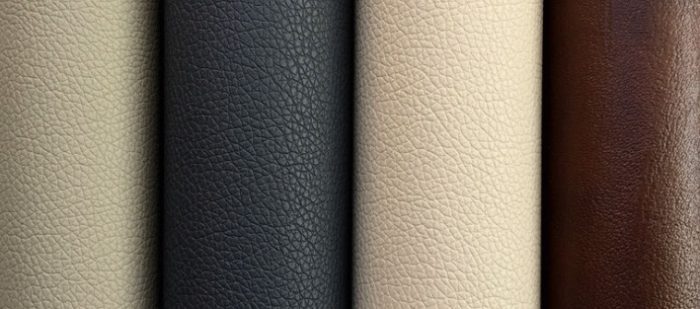
Even common PU synthetic leathers, often considered to be unsustainable, have been found to be far better for the environment than leather is.
These materials do not support animal agriculture, which is responsible for more green house gas emissions than all forms of transportation worldwide.
These materials also, importantly, do not require the slaughter of an innocent being.
Source:
Global Fashion Agenda
The Guardian
15 Wearing someone’s skin is gross.
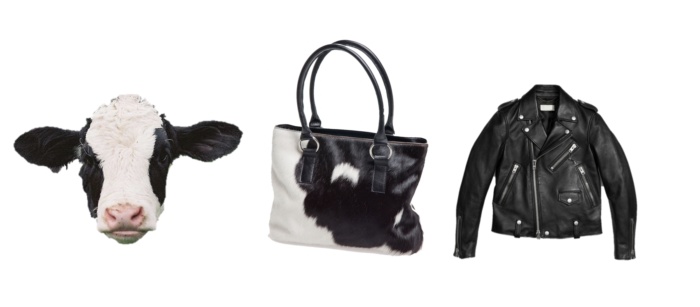
Though the chemical processes that create it may allow us to forget it, when we wear leather we are wearing someone else’s skin.
Skin that has been pulled off of someone’s body, that was bloody and fatty and raw.
That’s pretty creepy.
16 There are plenty of death free, sustainable alternatives!
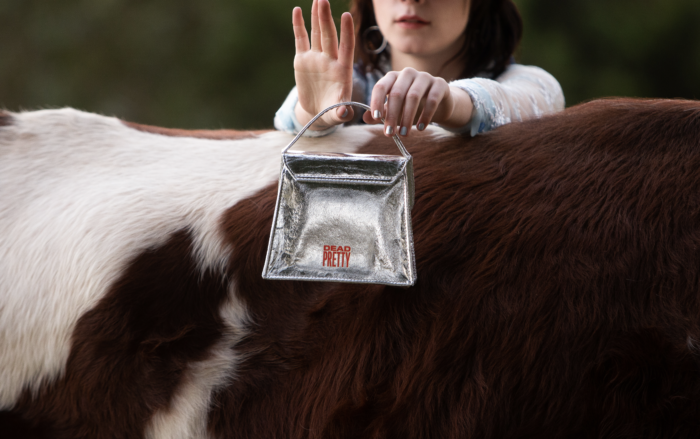
Even when ‘traditional’ PU synthetic leathers are more sustainable than leather, there are options that are much more sustainable and preferable for the planet:
- PU leather made from bio-based oil from grains rather than petroleum
- PU leather made partially from apple skin
- PU leather and suede made from recycled materials
- Pinatex, made from pineapple leaves discarded from agri-farming
- Mushroom leather
- Cork
- Washable paper
- There are also many shoes, jackets and belts made from totally alternative materials like recycled tyres and fire hoses!
17 You don’t need leather to look great

There are plenty of amazing vegan leather alternative bags, wallets, shoes, jackets and garments to wear!
There is no need to wear someone’s skin.
Pledge to go leather-free
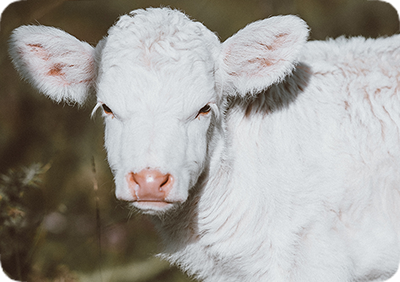
Ethical fashion does not involve paying for the slaughter of animals. By entering a few details below, you can commit to a kinder world and pledge to say 'no' to leather when you shop!
As thanks, we'll send you an e-mail containing discount codes for leather-free products from vegan brands, as well as further information to help you on your way.
Related Articles
-
Is Wearing Leather Like Wearing Fur?
The animals killed for fur and leather aren't so different...
-
Shopping Leather Free!
There is no reason to wear someone else's skin now that we can wear an array of vegan materials!
-
What Leather Really Looks Like
The gross and gruesome reality behind shiny new leather shoes...
-
Aquaculture
The global production of farmed fish is experiencing rapid growth, with fish farms now supplying over 50% of the world's fish and shrimp consumed by humans.
-
The Easiest Way To Support ALV
Snap, write, share and donate - for free! You can raise $1USD for each review of vegan food or products to support ALV.
-
Kangaroos
The world's largest land-based wildlife slaughter is happening to Australia’s iconic kangaroos, considered a pest on the land they have lived in for over 20 million years.